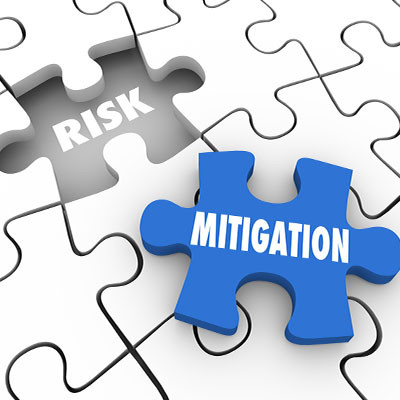EZ MSP Blog
How to Handle Your Risk Mitigation Strategies
It’s an unfortunate fact that all businesses will inherently face some threats during their operations. That’s inescapable. From cyberattacks to natural disasters to good, old-fashioned accidents, you’re liable to face no small risk. This risk makes a process known as risk mitigation so critical for all businesses to undergo with some regularity.
Let’s review a few aspects of creating and maintaining a dependable risk mitigation strategy.
What is Risk Mitigation, Exactly?
It shouldn’t be too controversial to say that most businesses, if given the choice, would rather not suffer from a disaster of any scale. Risk mitigation is simply analyzing the disasters you’re likely to face, identifying what poses the most risk, and addressing the impact of these threats to reduce them. You aren’t trying to avoid these risks; you’re proactively working to minimize what an event will do to you to a tolerable level.
To this end, we recommend you follow a four-step process to create your risk mitigation strategy:
1. Identify All Risks
What are your business’ priorities regarding its data, and what risks could your business face? How do your employees factor in, or your location? What about the industry? Your risks are considerable, but you need to understand what they are.
2. Run a Risk Assessment to Rank Your Risks
Once these risks are categorized, you must determine how severe each is. Otherwise, you won’t have any baseline against which to measure your reduction. You also need to identify what level of risk you can accept and work to reduce your various factors down to this level by addressing what needs to be fixed.
3. Address Your Risks
This is the step where you take your data and observations and implement your strategy. What risks can be avoided by shifting your plans to limit your exposure? What risks can be accepted? What risks can be moved to parties who can manage it better than you can? These decisions need to be based on various factors, as different strategies will do a better job of addressing different risks.
4. Track These Risks
Watch and observe how your various identified risks change over time. Use your metrics to see how your efforts and external factors have altered your risks. Are you still meeting all of your required compliance baselines? Risk changes, and you need to know when it does.
5. Make Adjustments and Continue Monitoring
Rinse and repeat. It’s as simple as that. You must continue testing and analyzing your infrastructure to ensure your strategies remain effective as these risks change.
Risk Mitigation is a Whole-Team Responsibility
Everyone in your organization needs some level of involvement in managing risk, depending on their role. This includes any third parties you work with.
Including us, if you’re utilizing our managed services to help maintain your business’ technology. If you’re not, we’d welcome you to give us a call and learn more about what this entails. We’re more than happy to embrace our responsibility in risk mitigation and management alike. Give us a call to learn more.

